President Ronald Reagan--Courtesy of the National Museum for the USAF
Several years after graduating from college and while employed as a sports announcer by a radio station in Iowa, Ronald Reagan began taking home-study U.S. Army Extension Courses. He enrolled in the program on March 18, 1935, and by December 1936, he had completed 14 courses. He then joined the Army's Enlisted Reserve Corps at Des Moines, Iowa, on April 29, 1937, as a private in Troop B, 322nd Cavalry. On May 25, 1937, he was appointed a second lieutenant in the Officers' Reserve Corps of the Cavalry and on June 18, 1937, he accepted his officer' commission.
Following the Japanese attack of Pearl Harbor on Dec. 7, 1941, Lt. Reagan interrupted his acting career and on April 19, 1942, went on active duty. This was not achieved without some difficulty because when Lt. Reagan took his first physical exam, he was not accepted for active duty due to eyesight difficulties. His persistence finally triumphed and he was given another exam, which he passed. He was classified for limited service only, which permanently denied to him his ambition of serving overseas. His first assignment was at the San Francisco Port of Embarkation, Fort Mason, Calif., as Liaison Officer of the Port and Transportation Office.
At this time, the AAF and Warner Brothers Studios were planning a feature motion picture to be entitled "Air Force" and wanted Lt. Reagan for the leading role, so on May 15, 1942, he applied for transfer from the Cavalry to the AAF.
The transfer was approved and on June 9, 1942, Lt. Reagan was assigned to AAF Public Relations as P.R. Officer in Burbank, Calif., and subsequently to the 1st Motion Picture Unit in Culver City.
Lt. Reagan was promoted to first lieutenant, Jan. 14, 1943, and on Feb. 26, he was sent to the Provisional Task Force Show Unit of "This is the Army" at Burbank. Following this duty, he returned to the 1st Motion Picture Unit and on July 22, 1943, was promoted to captain.
As the result of a personal request from the Secretary of the Treasury to the Secretary of War, Capt. Reagan was ordered on temporary duty to New York City in January 1944 to participate in the opening of the 4th War Loan Drive, after which he returned to California to the 1st Motion Picture Unit. On Nov. 14, 1944, he was assigned to the 18th AAF Base Unit at Culver City where he remained until the end of the war. On Sept. 8, 1945, he was ordered to Fort MacArthur, Calif., for separation, effective Dec. 9, 1945.
While on active duty with the 1st Motion Picture Unit and the 18th AAFBU, Capt. Reagan served as Personnel Officer, Post Adjutant, Executive Officer, and even Commanding Officer, often two or more at the same time. On May 15, 1945, in a memo to Gen. H.H. "Hap" Arnold, Commanding General of the AAF, Maj. Gen. James P. Hodges, the Assistant Chief of the Air Staff for Intelligence, wrote that Capt. Reagan "has proven himself to be an officer of exceptional ability, demonstrating unusual initiative, and performs his duties in a superior manner. Captain Reagan has received a 'superior' efficiency rating continually since 1 Jul., 1943." The reference to "unusual initiative" undoubtedly resulted, at least in part, from Capt. Reagan repeatedly volunteering to assist in producing and narrating AAF motion pictures, in addition to his regular duties. By the end of the war, his military units had produced 400 training films for the AAF.
In 1945, Capt. Reagan was recommended for promotion but because there was no major's vacancy in his unit at the time, the request was not approved. On April 1, 1953, his commission in the Officers' Reserve Corps was terminated as required by law and his military affiliation apparently ended. On Jan. 20, 1981, however, he was inaugurated as the 40th president of the United States and became Commander-in-Chief of the U.S. Armed Forces.
Several years after graduating from college and while employed as a sports announcer by a radio station in Iowa, Ronald Reagan began taking home-study U.S. Army Extension Courses. He enrolled in the program on March 18, 1935, and by December 1936, he had completed 14 courses. He then joined the Army's Enlisted Reserve Corps at Des Moines, Iowa, on April 29, 1937, as a private in Troop B, 322nd Cavalry. On May 25, 1937, he was appointed a second lieutenant in the Officers' Reserve Corps of the Cavalry and on June 18, 1937, he accepted his officer' commission.
Following the Japanese attack of Pearl Harbor on Dec. 7, 1941, Lt. Reagan interrupted his acting career and on April 19, 1942, went on active duty. This was not achieved without some difficulty because when Lt. Reagan took his first physical exam, he was not accepted for active duty due to eyesight difficulties. His persistence finally triumphed and he was given another exam, which he passed. He was classified for limited service only, which permanently denied to him his ambition of serving overseas. His first assignment was at the San Francisco Port of Embarkation, Fort Mason, Calif., as Liaison Officer of the Port and Transportation Office.
At this time, the AAF and Warner Brothers Studios were planning a feature motion picture to be entitled "Air Force" and wanted Lt. Reagan for the leading role, so on May 15, 1942, he applied for transfer from the Cavalry to the AAF.
The transfer was approved and on June 9, 1942, Lt. Reagan was assigned to AAF Public Relations as P.R. Officer in Burbank, Calif., and subsequently to the 1st Motion Picture Unit in Culver City.
Lt. Reagan was promoted to first lieutenant, Jan. 14, 1943, and on Feb. 26, he was sent to the Provisional Task Force Show Unit of "This is the Army" at Burbank. Following this duty, he returned to the 1st Motion Picture Unit and on July 22, 1943, was promoted to captain.
As the result of a personal request from the Secretary of the Treasury to the Secretary of War, Capt. Reagan was ordered on temporary duty to New York City in January 1944 to participate in the opening of the 4th War Loan Drive, after which he returned to California to the 1st Motion Picture Unit. On Nov. 14, 1944, he was assigned to the 18th AAF Base Unit at Culver City where he remained until the end of the war. On Sept. 8, 1945, he was ordered to Fort MacArthur, Calif., for separation, effective Dec. 9, 1945.
While on active duty with the 1st Motion Picture Unit and the 18th AAFBU, Capt. Reagan served as Personnel Officer, Post Adjutant, Executive Officer, and even Commanding Officer, often two or more at the same time. On May 15, 1945, in a memo to Gen. H.H. "Hap" Arnold, Commanding General of the AAF, Maj. Gen. James P. Hodges, the Assistant Chief of the Air Staff for Intelligence, wrote that Capt. Reagan "has proven himself to be an officer of exceptional ability, demonstrating unusual initiative, and performs his duties in a superior manner. Captain Reagan has received a 'superior' efficiency rating continually since 1 Jul., 1943." The reference to "unusual initiative" undoubtedly resulted, at least in part, from Capt. Reagan repeatedly volunteering to assist in producing and narrating AAF motion pictures, in addition to his regular duties. By the end of the war, his military units had produced 400 training films for the AAF.
In 1945, Capt. Reagan was recommended for promotion but because there was no major's vacancy in his unit at the time, the request was not approved. On April 1, 1953, his commission in the Officers' Reserve Corps was terminated as required by law and his military affiliation apparently ended. On Jan. 20, 1981, however, he was inaugurated as the 40th president of the United States and became Commander-in-Chief of the U.S. Armed Forces.
 |
| President Ronald Reagan at age 71. |


















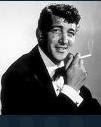






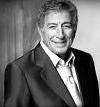










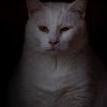


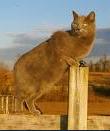




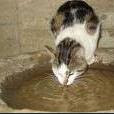





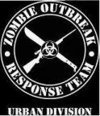







No comments:
Post a Comment